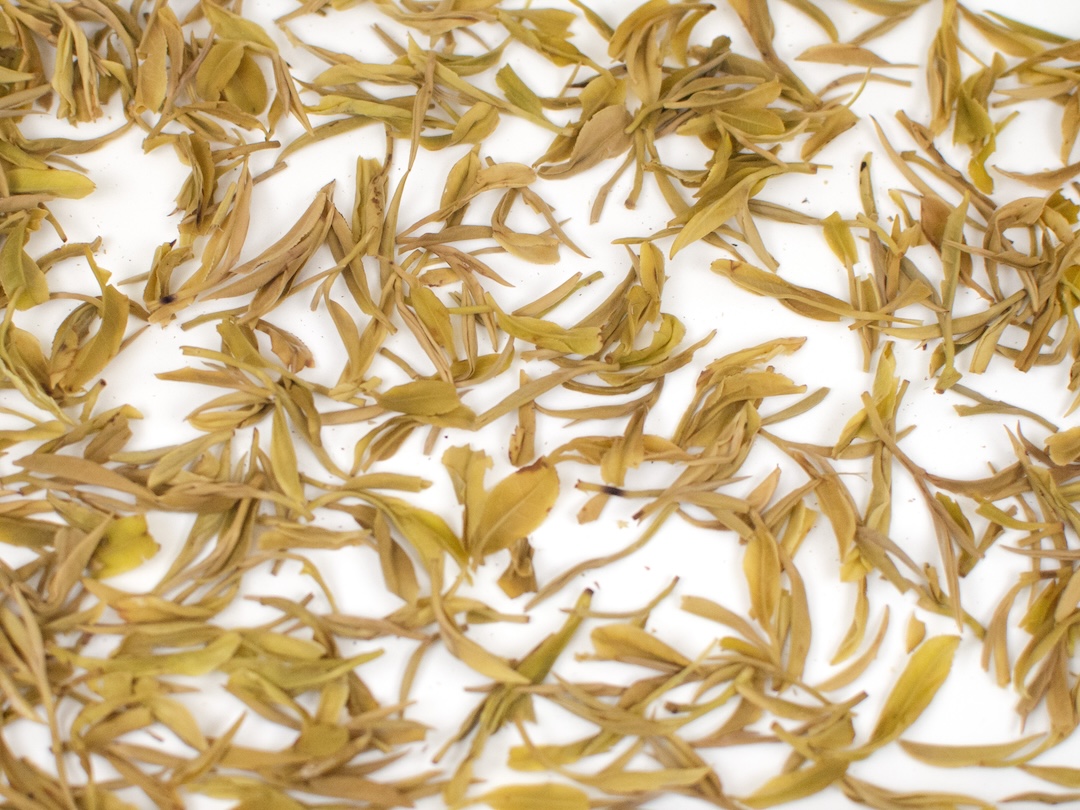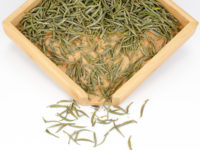Early Spring Mogan Yellow
Yellow Tea 2024
This earliest spring harvest of Mogan Yellow Buds reveals sweet and floral aspects of honey and citrus blossom alongside delicate notes of artichoke and mossy bark. Layered over Mogan yellow tea’s classic mineral and beeswax character, this tea develops an incredibly rich complexity.
$30.00
- 2025 $22.50
- Tea Origin
- Moganshan, Deqing County, Huzhou City, Zhejiang Province, China
- Tea Bush
- Mogan Quntizhong (Mogan Heirloom Tea Bush)
- Tea Maker
- Wang Xiangzhen and Zhao Xianqin
- Harvest Time
- April 7th, 2024
- Plucking Standard
- One bud, one leaf
This early spring tea was harvested on April 7th, 2024, the earliest harvest of leaves this year that were optimal for making into yellow tea. The small pluckings consist of one bud and one leaf.
The Curiosity of Mogan Yellow Tea

The singular teas from the peak of Mogan Mountain have long been a highlight and a curiosity in Seven Cups’ catalog. For a number of our staff, the sheer oddity of Mogan Huangya, a rare yellow tea made by one of the very few female tea makers in China, led them to try it before any other tea on the shelf. Its unique balance of bold and delicate flavors, stringent organic gardening standards, and consistently exceptional processing skills used to make it have made it a perennial favorite.
Although yellow tea makes up a minority of the tea produced at Hengling Gardens on the peak of Moganshan, it is the craft for which tea maker and family matriarch Wang Xiangzhen is most revered. She has been making yellow tea in this unique style endemic to Mogan for most of her fifty-year tea-making career.
Ms. Wang is a highly respected industry professional, grandmother, and teacher. Every next-generation yellow tea maker in Deqing County has been her student. Ms. Wang’s expertise has even been recognized for her comprehensive technical and cultural knowledge of Mogan Huangya yellow tea with the title of Inheritor of Intangible Cultural Heritage — an award that amounts to a recognition of her status as a living treasure.
What Makes Yellow Tea Yellow

The distinctive menhuang step of processing that differentiates yellow tea from green is also the most delicate. This is the step where the tender tea buds and leaves undergo the very gentle oxidation that gives them their signature yellow color. Ms. Wang still does this step by hand, wrapping small bundles of the hot, freshly fried leaves in cotton cloth to very slowly roast over low heat. She fills the tray on top of a large bamboo basket with these bundles, covers it with a bamboo-woven lid, and places it to roast low and slow over a pot of smokeless charcoal made from local wood and bamboo.
The mild oxidation that occurs in the menhuang process requires very careful monitoring. Each cloth-wrapped bundle of about a kilo of tea will be unwrapped, mixed, and re-wrapped multiple times for even development of the leaves and to make sure they do not oxidize too far.
The final result of a successful menhuang roast yields a rare and exquisite example of yellow tea: less sharp and grassy than a green tea, but masterfully worked to coax out different flavors and aromatics that are unique and compelling in their own right.
No chemical fertilizer, pesticide, or herbicide was used in the production of this tea. Click here to read more about our promise to fair trade and the environment.







